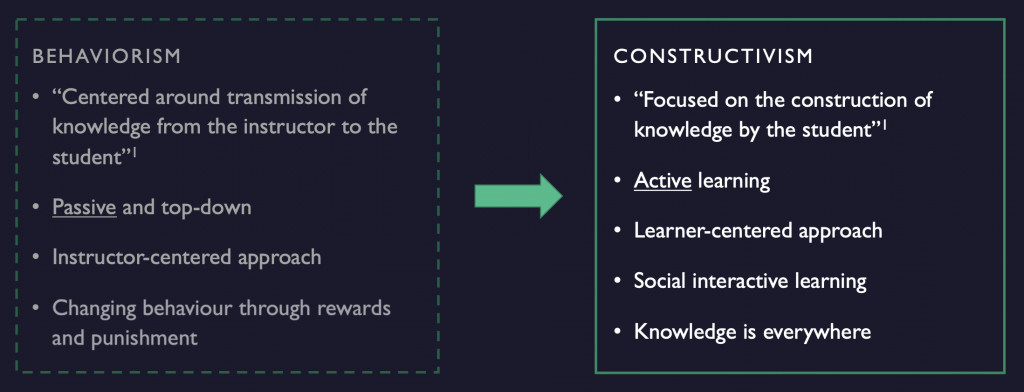Before I started ONL, I briefly read about the shift in learning approaches — from behaviourism (which was how we were taught growing up) to social constructivism.
In my own education journey, we did not have much of project works or group work in our curriculum, but we sometimes hear the term “study group” — that’s if you are sociable in personality and manage to find a few good friends to study together or share notes. I was pretty much on my own, and I realise I could have learnt better if we were given the opportunities to work in groups.
I love this mind map by Assistant Professor Hróbjartur Árnason. As a lifelong learner, I can now appreciate that learning is indeed social. ONL is a really good example:
- Active learning — Participating in attending webinars, reading and researching, contributing to group discussions and writing reflections.
- Learner-centered approach — With problem-based learning using the FISh model, the individual learners had the liberty to focus and dive deeper into aspects that were close to our hearts.
- Social interactive learning — A learning environment which motivates us to be open to share and fully involved in the collaborative work.
- Knowledge is everywhere — We don’t just learn from the facilitators, but also from all the other group members’ personal or professional experiences. The discussions are then guided by the facilitators so that there is focus and coherence in our research and presentation.
But we don’t automatically know how to collaborate with others or work together. Sometimes introverts tend to be conservative in speech and needs some nudging. Collaboration is a skill that both teachers and students have to develop. For teachers learning to facilitate, here are some practical examples:
- Fix the group members so that there’s continuity. Randomise the groupings for a good mix.
- Get the group to do a self-introduction (e.g. using Google Slides or explore fun tools!) and another activity as an ice-breaker.
- Set ground rules of dos and don’ts:
- Be inclusive, respectful and considerate.
- Group members take turns to be moderators to keep each meeting on-task.
- Every member gets to speak and contribute in a meeting.
- Everyone contributes to the success of the project.
- Design and scaffold the group project with milestones along the semester, so that red flags can surface early (if any).
- During the collaboration, encourage pair discussions (in-person/online) and guide students to provide comments on each other’s inputs (in an online document).
- Use enterprise collaborative tools like Microsoft Teams so that you can set up the channels and have some oversight of the discussions.
- For the completed piece of work,
- Students present each other’s portion, so that they need to internalise the contents.
- Use peer review to assess each others’ contributions based on a set of rubrics.
Academics may still face various challenges when some students are just difficult or conflicts arise, but hopefully that would not discourage you from providing the collaborative learning environment. Ultimately, the responsibility to learn, lies with the learner.
References:
Hassad, Rossi A.. “Constructivist and Behaviorist Approaches: Development and Initial Evaluation of a
Teaching Practice Scale for Introductory Statistics at the College Level.” Numeracy 4, Iss. 2 (2011): Article 7. DOI: https://dx.doi.org/10.5038/1936-4660.4.2.7
Wenger, E. (2010). Communities of practice and social learning systems: the career of a concept. In Social learning systems and communities of practice (pp. 179-198). Springer London.
Cayubit, R.F.O. Why learning environment matters? An analysis on how the learning environment influences the academic motivation, learning strategies and engagement of college students. Learning Environ Res 25, 581–599 (2022). https://doi.org/10.1007/s10984-021-09382-x

Leave a Reply